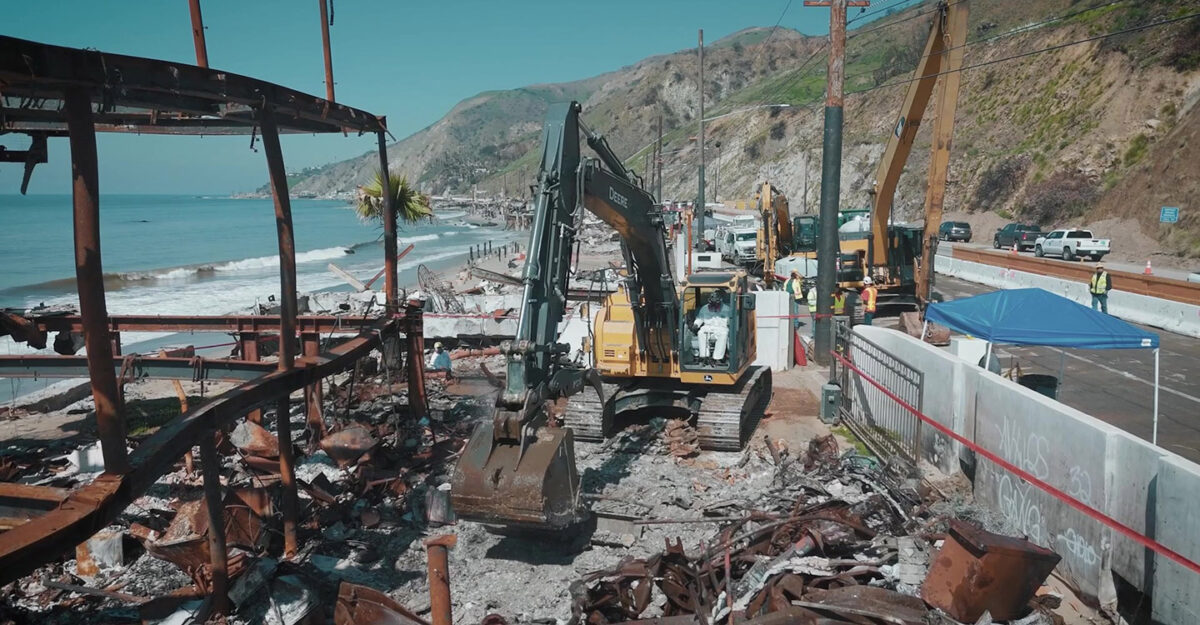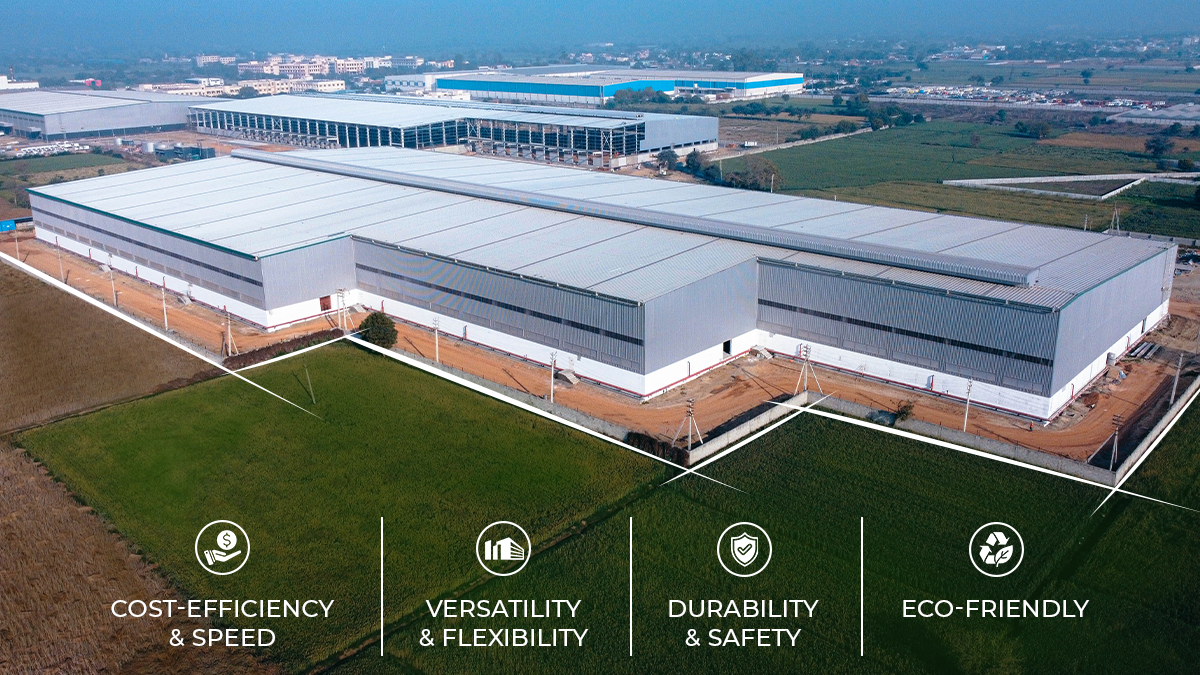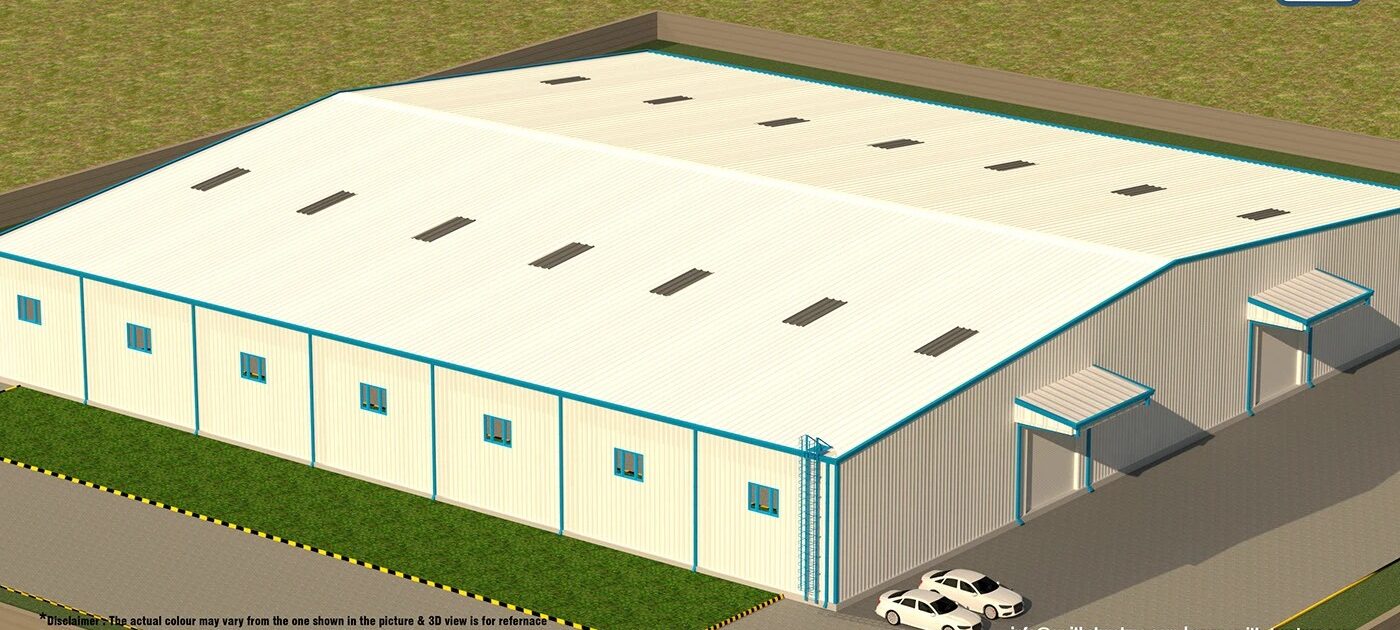
From Ashes to Action: LA Fire Recovery Enters New Phase
[ad_1]
✕
Six months after several devastating wildfires swept through Los Angeles County, debris removal has entered the home- stretch, while businesses, utilities and homeowners take the first steps toward rebuilding.
Since the days following the Eaton and Palisades fires, which began Jan. 7, the U.S. Army Corps of Engineers on behalf of the Federal Emergency Management Agency has been steadily working to clear ash and fire debris across the Eaton and Pacific Palisades burn areas. To date, FEMA has approved $3 billion for the cleanup and other aid to survivors—but it’s still a drop in the bucket compared to the estimated $130 billion in damage attributed to the fires.
The Corps cleared its first property—a charter school used by the Pasadena Unified School District—on Feb. 11. “So just over a month after the fire started, we had our first property cleared,” Col. Eric Swenson told ENR during an exclusive tour of the Eaton fire cleanup on June 17.
At press time, 5,468 properties from Eaton that opted in for Corps cleanup have been completed, approximately 96%. The Corps defines a completed property as when “we return those rights of entry back to the owners so they can start the next phase, which is the rebuilding phase,” Swenson says.
Meanwhile, crews cleaning the Palisades Fire have removed 1.13 million tons of debris and cleared 3,544 properties that submitted right of entry for the Corps, equating to 93% completion.
The Corps expects substantial completion by the end of this month for the cleanup of properties that opted in to have their debris removed by the federal government. This is well ahead of the original estimate for substantial completion, which was January 2026.
“In order to have the historic pace of debris removal that we have on this fire, we’ve used a lot of lessons from previous fires,” says Col. Jeffrey Palazzini, the Corps commander responsible for the Palisades fire cleanup. “Some of it is simply organizational, having experts that are associated with this mission who have done previous missions” that can work out trucking quantities and routes, landfill availability, crew sizes and more.

The EPA says it cleared 9,201 properties of hazardous materials from the wildfires in less than a month.
Photo by Lance Cpl. Jeslianne Torres/U.S. Marine Corps. The appearance of U.S. Department of Defense (DoD) visual information does not imply or constitute DoD endorsement.
“We have an excellent partner in the prime contractor ECC,” he adds. “They’ve worked with us on other fires before. And then the partnerships with state, local and federal partners, all pulling together in the same direction—that synchronization is really important to the speed that we’re able to remove debris in this fire.”
That speed has been critical for survivors to get back on their feet. “For me and my neighbors, one of the very big concerns for recovery was just how long the debris cleanup was going to take, because there’s so much cost associated with reconstruction, and most if not all the [insurance] policies that are held by the residents only cover part of what the cost is to get your life back,” says Talin Espinoza, chief strategy officer with Royal Electric, who lost her home in Altadena to the Eaton fire. “Every month that the process gets delayed for recovery is like tens of thousands of dollars of cost on us.”

Crews cleared their first property, a charter school for the Pasadena Unified School District, just over a month after the fires started.
Photo by Christopher Rosario/USACE
Mobilization
During the first phase of cleanup beginning in January, FEMA tasked the Environmental Protection Agency with identifying and removing hazardous material.
The EPA says more than 1,700 staff members cleared 9,201 properties in both fire areas in just 29 days during what it calls the largest wildfire hazardous materials cleanup in the agency’s history. The disposal included 1,038 electric vehicles and bulk energy storage systems.
“We’ve used a lot of lessons [from]
previous fires.”
Col. Jeffrey Palazzini, Army Corps of Engineers commander for the Palisades burn site, on the record pace of debris removal.
An additional 4,381 properties were deferred to phase two as part of the Corps’ mission because unsafe conditions at the sites—steep slopes, unstable rubble—prevented EPA from removing the waste.
Swenson arrived in L.A. on Jan. 12, while the fires were still active, to begin preliminary planning on phase two. He brought with him six months of invaluable experience in Maui from the previous year, where he led the debris removal mission after the Hawaii wildfires in 2023 destroyed much of Lahaina. That mission involved cleanup of around 1,500 properties, in addition to building a school and temporary housing.
“I learned a ton of lessons from my time in Maui,” Swenson says. “It reinforced to me that these missions are all about building trust with the community, so that they trust the federal government to come onto their property and remove their life’s work, their life savings—in some ways all of their personal possessions that went up in up in the fire. We’re going to come and put it in the back of a dump truck, and that’s hard for people. But if you build trust with them by answering their questions, reassuring them of the process, being a partner with them and walking them to the finish line, then they’re more willing to sign up.”

Col. Eric Swenson (middle) talks with the Staehles about preserving an architecturally valuable chimney. Swenson, a veteran of the Lahaina fire, made it a point to reach out to residents.
Photo by Scott Blair/ENR

Photo by Sgt. Chau Le/California National Guard. The appearance of U.S. Department of Defense (DoD) visual information does not imply or constitute DoD endorsement.

Map by Scott Hilling/ENR
Swenson says that upon his arrival in L.A., he spent around 50 hours in the first month doing public outreach, answering questions and building trust with the community.
The Corps’ advanced contracting initiative also allowed the team to get an early jump on phase two of the cleanup. “For emergency management missions, the Army Corps of Engineers has some contracts on standby ready to go, already awarded that can form the base of a response. That’s really how we’re able to respond quickly,” Palazzini says. “We have a partner contractor [with us] as quickly as we’re able to get on site to make that initial assessment.”
Burlingame, Calif.-based prime contractor ECC has worked on numerous wildfire recovery efforts with the Corps, including in Santa Rosa and Paradise, Calif. (ENR 4/15/2019, pg. 21). “Right from the get-go, we were challenged by the Corps on getting this done as quickly as possible and really identifying the choke points up front so we can we can alleviate them and move,” says Matthew Long, senior program manager with ECC.
Before crews touch a single piece of debris at a property, ECC performs what it calls a 360° site walk with the homeowner, which “establishes that real personal connection that you have with someone when you stand next to them,” Long says. “When they’ve lost everything, we view our job as just getting them to the next level of recovery and what we can do for them to get them there.”
Many other local firms also stood at the ready to pitch in. “The construction industry was eager to step up and support our Southern California communities following the devastation earlier this year,” says Peter Tateishi, AGC of California CEO. “Crews were mobilized quickly, and we are proud to see tangible progress being made for the families who lost their homes and communities.”
Long says at peak, ECC led a workforce of more than 3,000 people. “Additionally, we rely heavily on local and small businesses” in an effort to “try and reinvigorate some of the financial side” of the impacted communities, he adds. To date, more than 60% of ECC’s subcontracts have gone to small businesses.
Emeryville, Calif.-based Anvil Builders, one of those subcontractors, significantly ramped up its labor force to handle the immense scope of work during the cleanup. Anvil foreman Philip Thompson brought lessons learned while working on the Camp Fire recovery. “I remember distinctly talking to a homeowner in Paradise, and he said ‘I couldn’t see my future while all the ash and debris was here. Now that it’s gone, I can actually see my house being rebuilt.’ So on the human side of that, that’s the best part of what we’re doing now: we’re helping everybody see their future.”
Often homeowners will have unique requests for the crews. “Sometimes, the property owner tells them about some specific things that they’re hoping to find in the debris, and the crew will do their best to help them find it,” Palazzini says. In other cases, the homeowner may want to retain part of the burned structure, such as the foundation—or in the case of one cleanup site visited by ENR, the chimney.

Photo by Christopher Rosario/USACE. The appearance of U.S. Department of Defense (DoD) visual information does not imply or constitute DoD endorsement.

Big chunks of concrete, metal and other debris are broken down into manageable chunks before being hauled away for recycling.
Photo by Patrick Moes/USACE

Prime contractor ECC brought on as many as 3,000 workers for cleanup efforts, and also parceled out work to many small businesses.
Photo by Christopher Rosario/USACE
“The crew that’s been here has been terrific,” says homeowner Robert Staehle, a retired engineer at the NASA Jet Propulsion Laboratory who originated the mission that eventually became the New Horizons flyby of Pluto in 2015. “The planning was great. All the right equipment showed up when it was supposed to, and all the right people with the right skills. They completely listened to us about that we wanted to save in particular this chimney, which was a centerpiece of the architecture of the house, designed by noted architect Ken Gordon. So the experience for us has been very good.”
A typical crew comprises five laborers plus a foreman, along with a Corps quality assurance inspector. Safety is a primary concern. “Thirty people that we know of were killed by this fire, and we don’t want to lose a single person in the recovery effort, so we talk about safety multiple times a day,” Swenson says. Along with typical PPE, Tyvek suits and respirators are donned by those near ash and other environmental hazards, and air quality is monitored regularly.
“We’ve had a few minor mishaps, but we work very hard when we have one of those to identify it, to learn why it happened and what we can do better the next time so we can prevent some of that from happening,” Swenson says. “And we’ve had a wonderful track record so far.”

Los Angeles County faces thousands of extra rebuilding permits and has set up a centralized hub. In Altadena, crews begin reconstruction on a home.
Photo courtesy LA County Public Works
Waste Stream
Once on site, crews cut steel and other metal into more manageable sizes, and similarly break up concrete and masonry before they are loaded into dump trucks. To ensure safe transport of ash and other materials, the Corps keeps everything wet to reduce dust particles. Crews install thick plastic liner in each truck. After an excavator loads the ash, another tarp gets placed over the top for transport. “That’s a best practice that we’ve learned throughout several fire removals, so that as we’re transporting the ash to a certified landfill, we don’t have further contamination along the route,” Palazzini says. “This is a very safe and sure way to keep the ash contained within that plastic and tarp.”
At peak in Altadena, Swenson says 241 crews were clearing around 130 properties per day and filling 3,000 truckloads. With the more challenging mountainous terrain of Pacific Palisades, Palazzini says they were taking up to 1,300 truckloads per day to recycling and landfills. At its last update June 9, FEMA said it had cleared 2.3 million tons of debris.
FEMA and the Corps have set up temporary non-ash debris staging and reduction points, including one at Will Rogers State Park, serving the Palisades. “This is a really key part in the operation that’s allowed us to move fast,” Palazzini says. “It’s centrally located. We bring clean concrete, metal and vegetation to that site” where the materials are reduced. “The concrete is crushed, the metal is compacted, the vegetation is chipped and mulched. And so as we transport it off of that site, it takes far fewer trucks than it would if we were taking the unreduced size of the material.”
The concrete, metal and mulch all enter the recycling stream. Fewer trucks also mean reduced emissions and lessened headaches for local residents, he adds.

Moisture and plastic tarps are used to contain ash in dump trucks for transport.
Photo by Scott Blair/ENR
Major Work Ahead
Now that the majority of sites are receiving final sign-offs, property owners are gearing up to start the long process of rebuilding. Royal Electric’s Espinoza says her property was cleared April 19, which gives her “peace of mind knowing that there’s nothing obstructing our reconstruction timeline.”
LA County has also moved from response to full-fledged recovery, says Mark Pestrella, Los Angeles County Public Works director. On top of the approximately 13,000 properties damaged, critical infrastructure impacts included three bridges and hundreds of miles of roadway, along with the storm drain, inlet/outlet and channel systems. Debris basins were either damaged or overflowing with debris, all requiring major reconstruction.
“In terms of power recovery, we’re at 153 miles of linear power lines that are going to be undergrounded—but aren’t yet—and that includes telecom as well,” Pestrella says.
Given the number of rebuilds ahead, a business-as-usual structure won’t cut it, said Ciara Barnett, assistant deputy director of Los Angeles County Public Works during ENR’s Groundbreaking Women in Construction Conference June 9.
Her agency typically issues about 4,000 construction permits per year across the entire county, but now is facing an additional 2,000 permits just due to Eaton by the end of the year, Barnett said. The county set up a centralized informational hub at recovery.lacounty.gov. “For now, we only have the unincorporated [areas] dashboards, but we’re working with the cities to either link to or provide their information because really we need to see the region build as a whole,” she adds.
The City of Los Angeles awarded AECOM a contract expansion on June 6 to support recovery efforts in Pacific Palisades. In partnership with the city and Hagerty Consulting, the firm’s expanded scope will include creating a comprehensive rebuilding master plan, an infrastructure reconstruction plan for the phased deployment of all utilities above and below ground, a logistics plan for materials management and a master traffic plan to help teams navigate expansive construction efforts throughout the area.

Photo by Christopher Rosario/USACE. The appearance of U.S. Department of Defense (DoD) visual information does not imply or constitute DoD endorsement.

Photo by Scott Blair/ENR
At a debris staging and reduction point located at Will Rogers State Park (below middle and right) crews break down concrete, metal and vegetation for transport to recyclers.
Simplified Process
Multiple strategies are in place to help with the rebuilding process. Homeowners can rebuild “like for like,” which means they can build back so long as they build substantially what they had before in about the same location—with up to an additional 10% or 200 sq ft, Barnett explained. In Eaton, about 60% of homes were built in the 1940s or earlier, so all those homes will now be rebuilt to current code.
To streamline permitting, LA County has engineered a single application process. After applying to the county, residents first go through planning, then, once building plans are in hand, all the permit departments are activated at the same time. Concurrent reviews save an applicant from having to go to multiple county departments. One-stop permit centers have also been established in Calabasas, Los Angeles and Malibu.
A pre-approved building plan program will further expedite rebuilds, especially in situations where homeowners aren’t familiar with the building process. Also, a self-certification pilot program allows licensed architects and engineers to attest that their plans meet code so they can bypass the building plan review.
Lessons learned throughout this process will likely inform future updates to the state building code. California has a three-year code cycle, with the next version set to be implemented on Jan. 1, 2026. Changes will be proposed this fall, said Barnett. “A lot of people are looking at fire resistant rebuilding and where it should it be required,” she added, noting new county maps expected to be issued at that time that could have new information on where fire resistive construction would be mandatory.

As the Corps concludes its cleanup mission later this month, Angelenos must overcome hurdles related to permitting, insurance and finding a contractor before rebuilding can begin.
Screencapture from video by FEMA. The appearance of U.S. Department of Defense (DoD) visual information does not imply or constitute DoD endorsement.
Another idea floated by the county is the creation of a central building authority to coordinate and create agreements between multiple jurisdictions to permit and construct locally. However, this solution would require legislative action by the state, according to a county study.
Pestrella points to a “one-trench” policy that utilities have agreed to throughout the county, including both cities and unincorporated areas. The county has generated a map of all utilities for both wildfire areas, then overlaid that with the proposal for undergrounding from Southern California Edison and the L.A. Dept. of Water and Power.
Only a small number of permits have been issued so far to property owners, but one important consideration will be if survivors even want to come back, Pestrella points out. “We’ve been really encouraging residents and commercial property owners to take their time and give them as much facts as we can about what it will take to rebuild, and then make the decision based on that and not make it spur of the moment,” he says.
Luckily for homeowner Staehle, a secondary home on his property remains intact, so he plans to wait—mostly because the demand for qualified contractors is exceptionally high. “Right now we can’t afford it,” he says. “The prices that people are being quoted for rebuild are on a dollars-per-square-foot basis twice what we insured at—and we insured at a premium over what a conventional rebuild would cost.”
Espinoza, on the other hand, has a final plan set and a contractor hired. She is hoping to start construction in August, with the contractor estimating a year until build-out. “I feel like I know too much about construction to believe that,” she says. “There’s a lot of uncertainty in terms of timeline and cost, but all we can do is try to make some good decisions and put one foot in front of the other.”
[ad_2]
Source link
Post a Comment
You must be logged in to post a comment.







